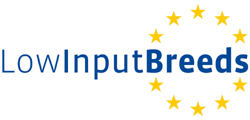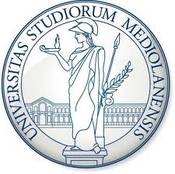Contact
Prof. Rita Rizzi
Department of Veterinary Science and Public Health (DIVET) ![]()
Faculty of Veterinary Medicine
Milan University
Via Festa del Perdono 7
20122 Milano
Italy
Tel. +39 02503 18503![]() rita.rizzi@no-spam.unimi.it
rita.rizzi@no-spam.unimi.it
Department of Veterinary Science and Public Health (DIVET) ![]()
Contact
Ing. Peter Polák, PhD.
Institute of Animal Breeding and Product Quality (IABPQ)
Animal Production Research Centre, Nitra
Head IABPQ
Tel. +421 37 6546 428![]() polak@no-spam.cvzv.sk
polak@no-spam.cvzv.sk
www.cvzv.sk/index.php/en/institutes/92 ![]()
Contact
Donagh Berry
Animal & Grassland Research and Innovation Centre
Animal & Bioscience Research Department
Teagasc
Moorepark
Fermoy
Co. Cork, Ireland
Tel. + 353 25 42386
Fax + 353 87 6955714![]() donagh.berry@no-spam.teagasc.ie
donagh.berry@no-spam.teagasc.ie
Personal website
Three new project partners
On the advice of a group of independent assessors the LowInputBreed project has invited three new partners to join the LowInputBreeds consortium to bring in additional expertise and data to subproject 1 on cattle.
The new partners are:
- Rita Rizzi, The Department of Veterinary Science and Public Health (DIVET) of the Faculty of Veterinary Medicine at Milan University, Italy
- Peter Polák, Department of Animal Breeding and Product Quality, Animal Production Research Centre, Nitra, Slovakia
- Donagh Berry, Irish Agriculture and Food Development Authority – Teagasc
Department of Veterinary Science and Public Health (DIVET) of the Faculty of Veterinary Medicine at Milan University, Italy
Rita Rizzi will be working with Carora cattle in Venezuela, originating from Creole cattle crossed with Brown Swiss and raised mainly for milk production under intensive and extensive systems. Carora bulls are currently used in Holstein herds to obtain a productive crossbred cow adapted to the tropical climate or with Bos indicus cows to give “doble proposito” animals. The primary selection object has been milk quantity and quality although attention is also given to heat tolerance. Bulls are routinely evaluated visually for hair length since the ability to maintain body temperature in hot environment is associated with sleek, dense coats. Milk yield is positively associated with heifers’ live weight at 18 months; however, as size increases nutrient requirements increase, leading to higher feed costs and reduced incomes especially for smallholders. This has resulted in a massive exploitation of pastures with negative environmental consequences for additional grazing and land conversion (e.g., forest clearing).
Pedigree records from 1992 are available for live weight at specified ages and throughout lactation both in purebred Carora and crosses with B. taurus and B. indicus breeds as well as test-day and 305d milk yields, mainly in purebred Carora. The Breed Association is going to modify breeding objectives, giving more emphasis to milk yield per unit of [metabolic] weight rather than to milk yield per se, in order to increase sustainability reducing grazing pressure maintaining the same productive level and also improve heat tolerance.
Department of Animal Breeding and Product Quality, Animal Production Research Centre, Nitra, Slovakia
Peter Polák will consider beef traits for Slovak Pinzgau (or Slovak Pinzgauer) cattle in Slovakia; a local mountain breed recognised as part of European animal genetic resources. The breed originated in Pinzgau region near Salzburg in Austria and bulls were first imported to Slovakia more than 250 years ago. Since this time autochthonous Carpathian Gray and Carpathian Red cattle from the North mountain regions of Slovakia have been continuously crossed with original purebred bulls. The breed Slovak Pinzgauer was established in 1950s from a local population of Pinzgauer cattle in Slovakia. Historically the breed was kept as triple purpose (milk, draught and meat) although providing power disappeared after mechanisation of field production. At present a reasonable proportion of breeders have stopped milking due to the competition of specialised dairy breeds. However over the last 50 years the breed has been improved almost equally in milk and meat production, although beef production traits were neglected in selection. Muscle development of hind-quarters is not sufficient to compete with foreign finishing cattle. However, because the breed is fully adapted to the harsh conditions of Carpathian Mountains by its excellent walking and grazing ability and robustness (health and fertility) it is popular in low input systems of suckler cow production (cow – calf unit). For cow – calf production schemes maternal traits are important, such as nursing ability, easy calving, milk ability etc. and meat production traits (growth intensity and body conformation). This subproject aims to design a new evaluation protocol for Slovak Pinzgauer cattle to support meat production traits while maintaining the excellent maternal traits and growth rates under the conditions of mountain low input and organic production.
Department of Animal Breeding and Product Quality, Animal Production Research Centre, Nitra, Slovakia
Donagh Berry and colleagues at Teagasc have been comparing breeds for grazing based systems in Ireland for many years, considering Holstein-Friesian, Jersey, Montbeliarde, Norwegian Red and their crosses. Extensive genotype and phenotype records have been collected on large populations of both purebred and cross-bed cows kept under low-input grazing systems. Data has accumulated under a range of National and EU projects however further useful information can be derived from these records. Phenotypic records will be used to derive previously un-quantified lactation profiles for alternative aspects of milk quality such as fat, protein, lactose, urea, casein and fatty acid content of milk from low-input grass-based dairy cows, evaluating breed, parity or experimental treatment differences and corresponding benefits of heterosis.
We are welcoming these partners to our group and look forward to their contribution to LowInputBreeds.
More information
- Department of Veterinary Science and Public Health (DIVET) of the Faculty of Veterinary Medicine at Milan University, Italy
- Department of Animal Breeding and Product Quality, Animal Production Research Centre, Nitra, Slovakia
- Irish Agriculture and Food Development Authority – Teagasc
 This website was archived on December 19, 2017 and is no longer updated.
This website was archived on December 19, 2017 and is no longer updated.





